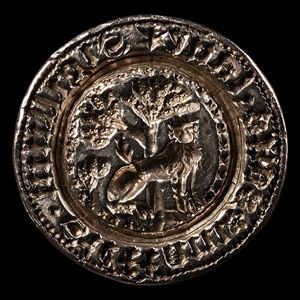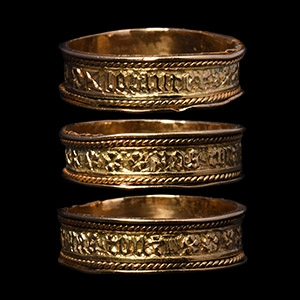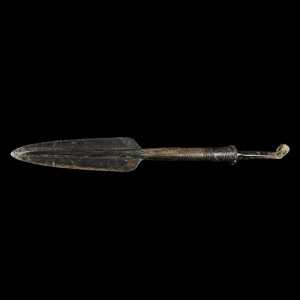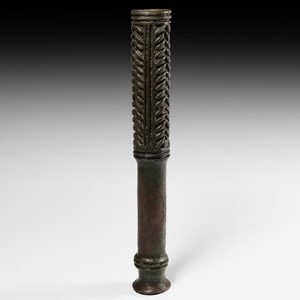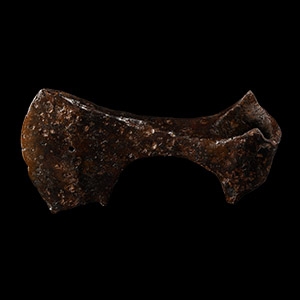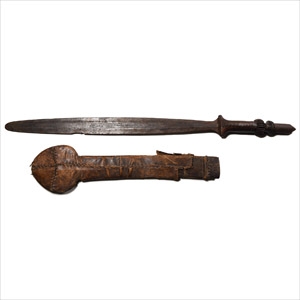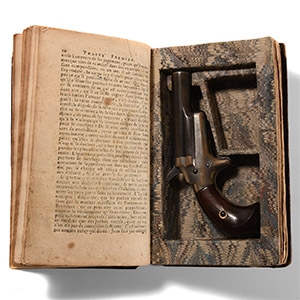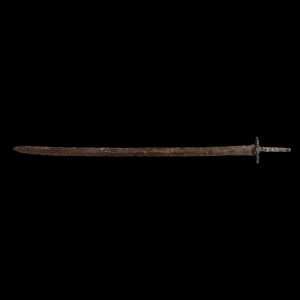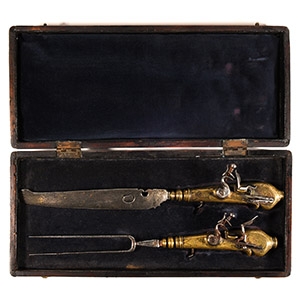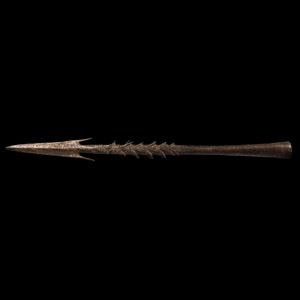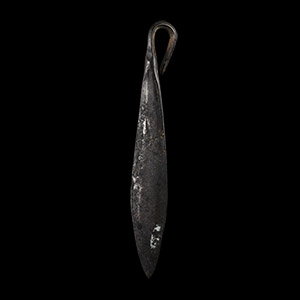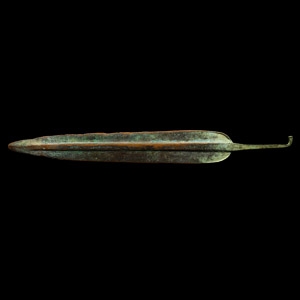Home > Auctions > 21 - 25 February 2023
Ancient Art, Antiquities, Natural History & Coins
Auction Highlights:
Ex S. Motamed collection.
with Bellman's Auctions, 20th-26th June 2015, lot 2482.
Property of a London gentleman.
Cf. Khorasani, M.M., Arms and Armour from Iran - The Bronze Age to the End of the Qajar Period, Tübingen, 2006, p.633, cat.286, for similar type.
In this category (Type II of the Khorasani typology) the shaft has a tang with a bend towards the end. The blade has three fullers, and the shaft is usually engraved with diagonal lines. Similar pieces were excavated by Dr Negahban in Marlik.
Acquired 1980-2015.
Ex Abelita family collection.
Cf. The Metropolitan Museum, New York, accession number 56.102.1, for similar.
Acquired 1971-1972.
From the collection of the vendor's father.
Property of a London, UK, collector.
Cf. Thunmark-Nylén, L., Die Wikingerzeit Gotlands I.: Abbildungen der Graubfunde, Stockholm, 1992, plate 13, item 14.
The axe appears to belong to the typology of Viking side axes of Wheeler type B (Wheeler III / Rygh 559). Usually these bearded axeheads (skeggöks) had a longer edge, designed to split tree trunks into planks and beams, or heads during the battle. Some of the bearded axes were known as halfÞynna öx, the neck on such 'half thin axe' was thinly forged, to make it lighter.
Acquired 1971-1972.
From the collection of the vendor's father.
Property of a London, UK, collector.
See Hjardar, K. and Vike, V., Vikings at war, Oxford-Philadelphia, 2016, pp.175 and 178, type A spear.
The spears belong to the type A of the first main group of Viking spears, the so-called Frankish spearheads, which occur between 750 and 950 A.D., but mainly in the 8th and 9th centuries. The Mediterranean influence is still evident on the foliate shape of the blade.
Acquired locally by donation.
Property of Sense Charity, Cambridgeshire, UK.
Cf. Spring, C., African Arms and Armour, Smithsonian Institution Press, 1993, p.65.
The Yaka are an African ethnic group found in the south-west of the DRC, with the Angolan border to their west. The Yaka people were historically known for their excellent diplomatic and military abilities which enabled them to found the Yaka kingdom in the 17th century. One of their distinctive weapons was a long, straight sabre which developed into an increasingly elaborate style during the 19th and 20th centuries A.D.
Acquired Holts Auction, 2020, lot 899.
Property of a Kent collector.
Accompanied by lot ticket.
Sold as an exempt item under Section 58 (2) of the Firearms Act, 1968, to be held as a curiosity or ornament. No license required but buyer must be over 18 years of age.
Acquired 1971-1972.
From the collection of the vendor's father.
Property of a London, UK, collector.
Accompanied by an academic report by military specialist Dr Raffaele D'Amato.
Cf. similar specimens in Харламов, П.В., ‘Weapons complex of the Nomadic tribes of the Volga-Ural Region in the 9th -11th Centuries (in Russian)’ in Archaeology of the Eurasian Steppes, Vol. I, Kazan, 2017, pp.364-379, esp.figs.6, 14; Lebedinsky, I., De l’epée scythe au sabre mongol, Paris, 2008, pp.172ff.; for discussion on the sabres see Pletneva, S.A., Antiquities of black hoods (in Russian) SAI. Issue, E1-19, Moscow, 1973; Evglevsky, A.V., Potemkina, T.M., ‘Eastern European late nomadic sabers’ in Evglevsky, A.V., European Steppes in the Middle Ages, Vol.1, Donetsk, 2002, pp.291-336.
Various sabres of similar typology were found in a complex of medieval nomad weapons in archaeological excavations in the steppe and forest-steppe zone of the Volga-Ural region; chronologically, they were dated to the 9th-11th centuries.
Acquired Peter Wilson Auction, 2020, lot 13.
Property of a Kent collector.
Accompanied by lot ticket.
Sold as an exempt item under Section 58 (2) of the Firearms Act, 1968, to be held as a curiosity or ornament. No license required but buyer must be over 18 years of age.
Acquired before 2000.
From the collection of a European gentleman living in the UK.
Acquired 1970s-1990s.
Ex Rabi Gallery, Mayfair, London, U.K.
From a specialist collection of pottery.
Acquired 1969-1999.
London collection of the late Mr S.M., thence by descent.
Ex Abelita family collection, 1980-2015.
See similar spearhead in Khorasani M.M., Arms and Armour from Iran. The Bronze Age to the End of the Qajar Period, Tübingen, 2006, item 270, for type and p.241.
The spearhead belongs to the type V of the heavy spearheads, similar to the ones excavated by Dr. Negahban in Tomb 47 (Trench XXIIE) of the Marlik necropolis. The heavy spearheads, cast in one piece, usually have an oval blade with rounded gently curved shoulders and a rounded midrib near the tang.
757 - 768 of 2116 LOTS


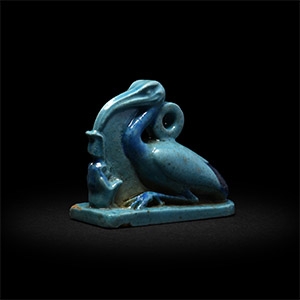



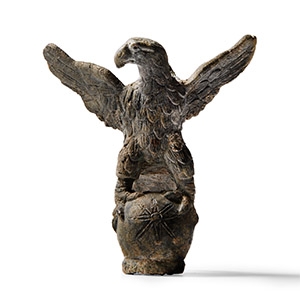
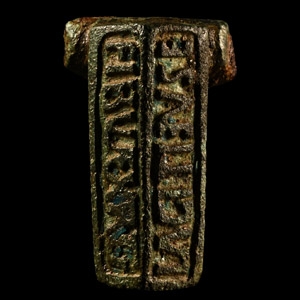

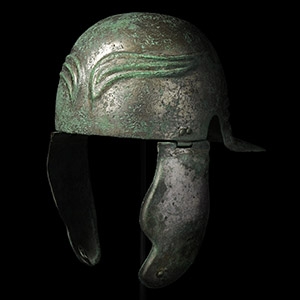
.jpg)
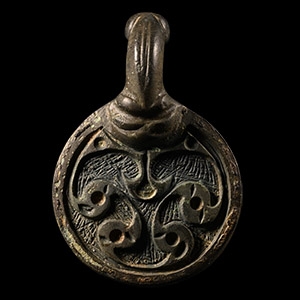
.jpg)
